
Wattled cranes are the largest crane species in Africa; globally Vulnerable but Critically Endangered in South Africa and Ethiopia. They rely on wetlands for breeding, and natural grasslands account for 75% of their breeding territory. It is, in fact, these characteristics of the wattled crane breeding biology that most significantly tie humanity to wattled cranes. Endangered Wildlife Trust’s Lara Jordan reports
In South Africa, the wattled crane population has declined by 35% over 20 years, leading to the population falling to numbers as low as 131 in 1995. In a water-scarce country like South Africa, wetlands play a crucial role through the storage, purification, stream-flow regulation and recharging of groundwater. All Earth’s creatures rely on natural water mechanisms (such as wetlands and rivers) for survival. But in South Africa, 35–50% of wetlands have been lost. In KwaZulu-Natal, the stronghold of South Africa’s wattled crane population, an estimated 50% of wetlands were lost between the 1950s and early 1980s. The loss of these wetlands is ascribed to damming, draining, afforestation, overgrazing, road building, siltation, and water abstraction. As the South African human population continues to increase, so too will water demands.

Occupying a complex space
Unfortunately, natural grasslands come under similar pressure as wetlands: only 2.8% of all grasslands are protected. Moreover, 65% of grasslands in South Africa have been irreversibly transformed through maize, sunflowers, sorghum, and wheat production. The mining industry, urban development, and rural sprawl are destroying vast areas of intact grasslands. These impacts, combined with the degradation of the biodiversity of grasslands through overgrazing, poor management, and lack of resources, are contributing to the increasing pressure on wattled cranes.
The mesic grasslands in the KwaZulu-Natal Midlands and Southern Drakensberg, where wattled cranes breed, require a specific management practice. Mesic grasslands occur in higher rainfall areas, where fires and grazing are meant to maintain landscape biodiversity. The climate in these regions consists of low precipitation, allowing grasslands to thrive. Good management of these grasslands mirrors natural ecosystem processes, so land users will burn in winter to allow for diverse new growth. Likewise, managing grazing livestock on these lands is a vital balance between climate, correct stocking density and limiting the time livestock is fed on an area. Limiting this time imitates the migration of antelope such as eland over this land.
Wattled cranes are winter breeders, and it is in this complex space that we find them successfully breeding. Disturbance at wattled crane nest sites impacts the breeding success of the species, and if landscape-management practices are not sensitive to breeding birds, then the success of the nest is unlikely. As wattled cranes primarily breed on farmlands, they depend entirely on the goodwill of landowners and farmers.
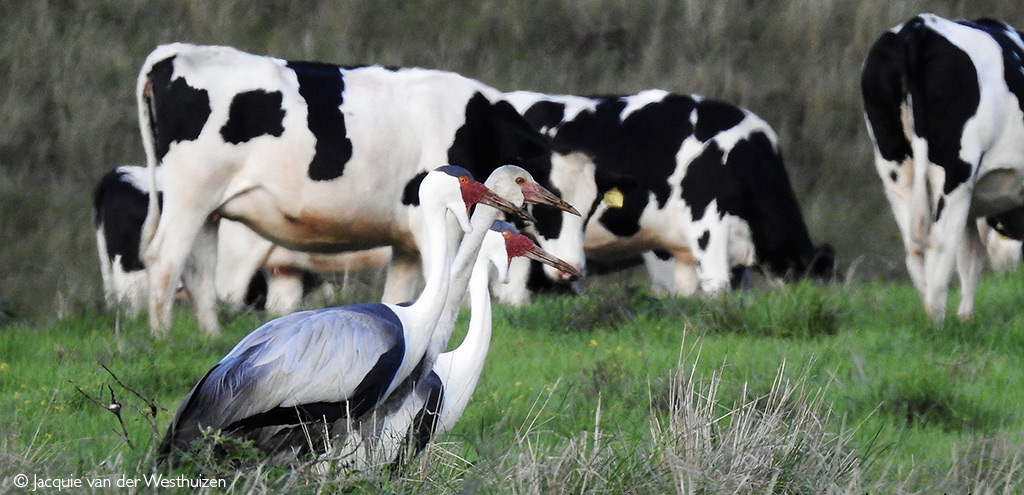
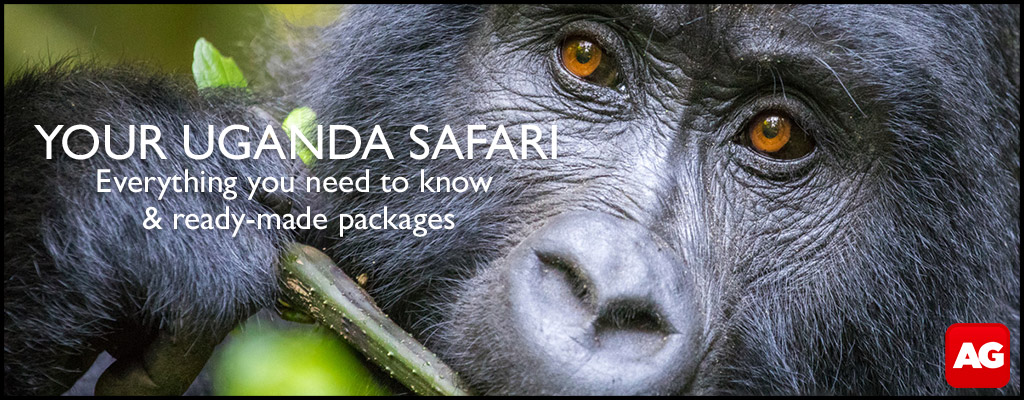
Preserving wattled crane habitat
Over the last three decades, conservation efforts have focused on preserving wattled crane nest sites by working with land users and farmers to develop sustainable practices. Through these efforts, we have observed a steadily increasing trend for wattled cranes within KwaZulu-Natal. In 2020, we recorded the most significant population count – of 399 wattled cranes – as part of an annual aerial survey. These surveys are conducted by the Endangered Wildlife Trust (EWT)/International Crane Foundation Partnership, the EWT/Eskom Strategic Partnership and Ezemvelo KwaZulu-Natal Wildlife (the provincial conservation authority).
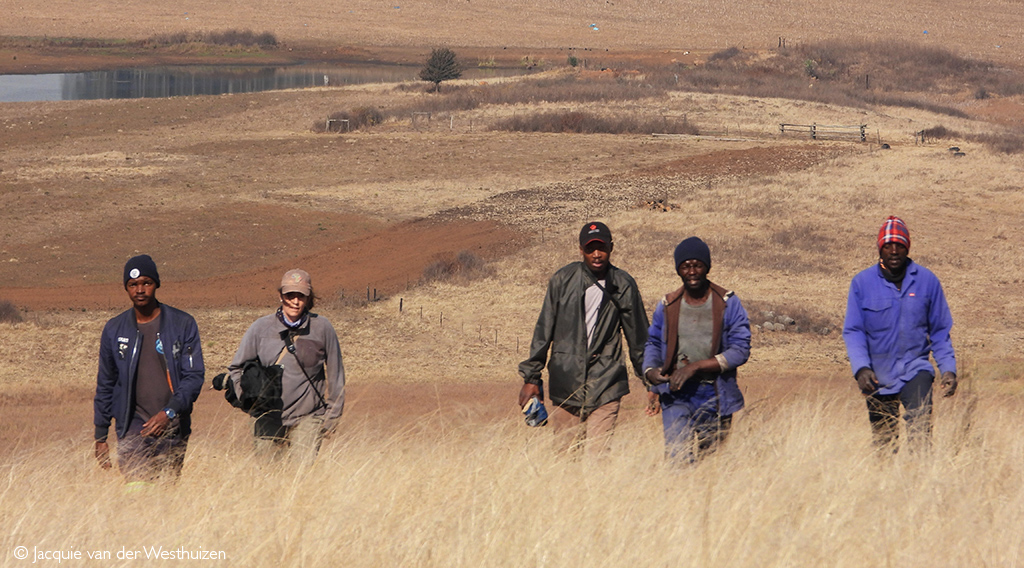
During this time, we have collected many success stories of our work. We have supported farmers by protecting an egg or a chick during the necessary winter burns. In these areas we have prevented further landscape degradation by helping farmers place the land into Biodiversity Stewardship Schemes, and helped farmers turn these tracts of land into nature reserves. We have worked with farmers to remove fences in which wattled cranes have been caught. We have engaged with communities to share the value of the species. We have educated communities on why feral dogs are a threat to cranes. This nest-by-nest approach may seem to be a slow method of increasing a population. Still, it is now a proven technique, and with only an estimated 81 nesting territories in KwaZulu-Natal, every nest site matters. Advancements to the monitoring repertoire include satellite transmitters on wattled cranes to understand their movement. Understanding the non-breeding birds that account for 50% of the wattled crane population is important. Furthermore, understanding the species’ habitat preference and their nesting, foraging, and roosting requirements is vital to ensure a habitable landscape remains for the species.
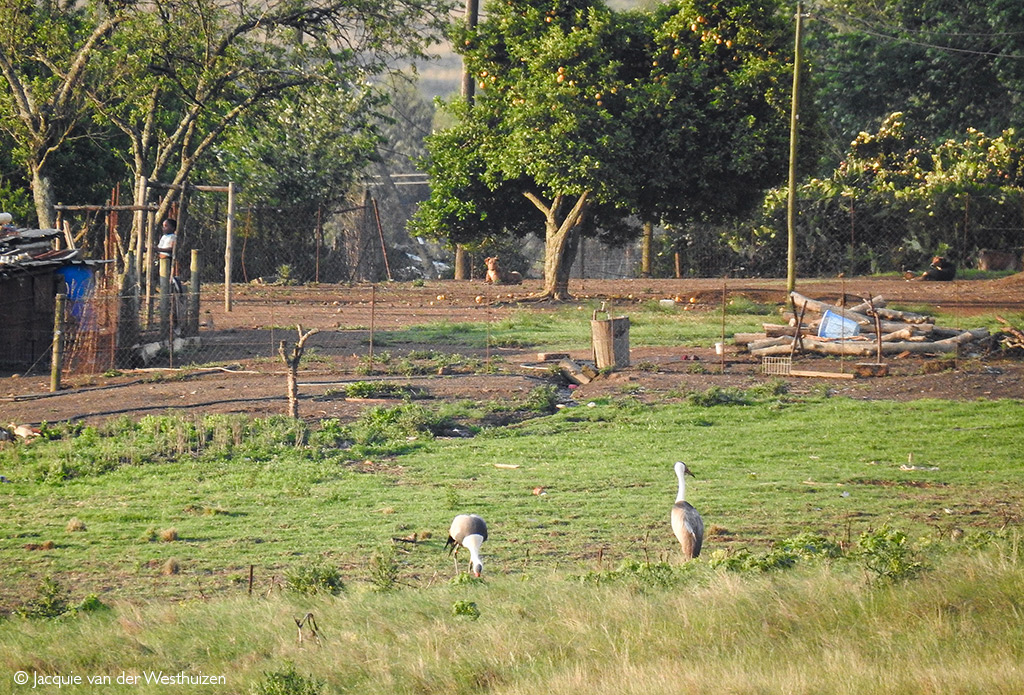
It was the Greek philosopher Heraclitus who was quoted saying, “Everything changes, nothing stands still”. This is an astute observation for these post-Covid times. Costs are increasing – especially fuel costs – causing the cost of food to increase. The war in Russia has impacted fertiliser costs, further increasing food prices. Farming is changing to keep up with costs, and land ownership is changing due to economic challenges. The culmination of these impacts has increased the workload for conservationists who must develop new relationships as land changes ownership, to maintain the work being done in the home range of wattled cranes. This vital nest-to-nest monitoring will remain a prominent part of wattled crane conservation to mitigate threats – and needs to be maintained.
As we look into the future, new threats that far exceed the scale previously utilised for wattled crane conservation are emerging. Avian influenza and malaria can severely impact the population of wattled cranes. The changing distribution patterns of diseases – which evolve due to climate change – will have to be monitored across South Africa due to the high movement patterns of fowl. This will need to form part of a national, if not international, effort.

Wattled cranes and water
The increase in floods and droughts that are affecting South Africa impact people AND wildlife. These extreme conditions impact wattled crane chick survival and could further reduce breeding success for the species. Yet, we are fortunate that wattled crane needs are aligned with the needs and desires of the human population. We require water, and so do the cranes. This will not change. The conversion of wetlands to dams with the correct research and technical input could provide nesting territories, supporting the species’ population growth.
 Want to plan your African safari to spot wattled cranes in the wild? We have ready-made safaris to choose from, or start planning a unique safari made just for you.
Want to plan your African safari to spot wattled cranes in the wild? We have ready-made safaris to choose from, or start planning a unique safari made just for you.
Protecting wetlands benefits cranes – and it also protects people in the face of climatic extremes. Intact wetlands can help control flooding and contribute to water resilience during droughts. Similarly, grasslands are a vital grazing resource for commercial and subsistence farmers. Appropriate grassland and wetland management is a skill that needs to be learned to maximise stock production, whilst preserving the grasslands over the long term.
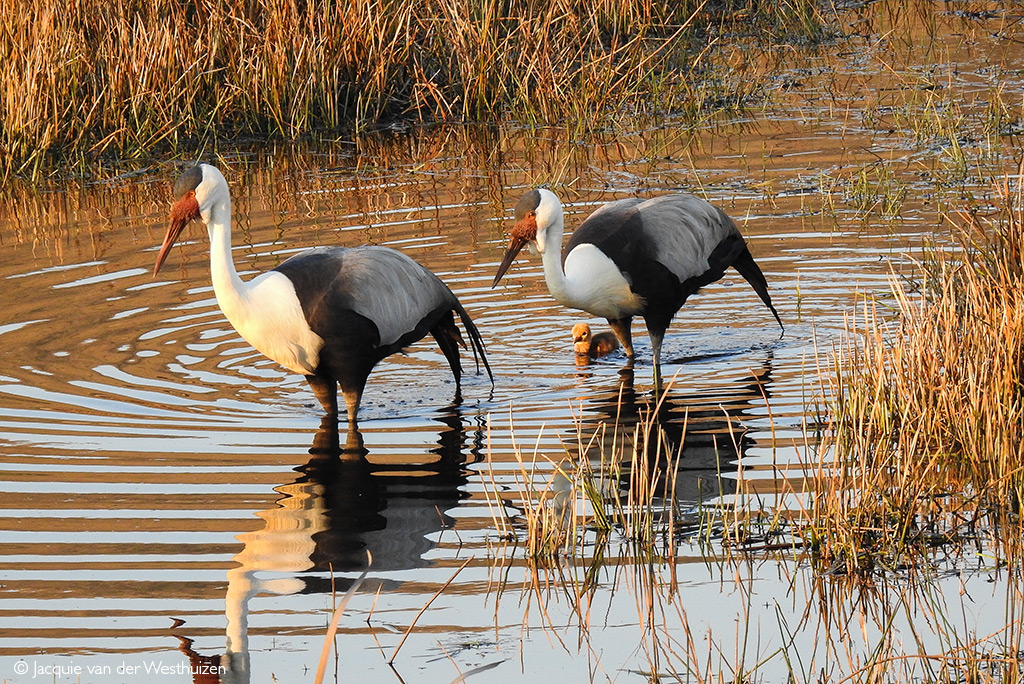
Predicted climate change for South Africa will likely cause a shift in the production of maize in the core wattled-crane home range. As other areas become too dry or too prone to drought, we expect to see an increase in the conversion of grasslands to maize lands in the Midlands and Southern Drakensberg. Maize is the staple diet for many South Africans. More conversion of grasslands to cultivated fields will cause a new decline in the population of wattled cranes. The South African human population is 60.41 million and is expected to increase to 62.90 million by 2025. Invariably, the increase in human population will worsen current pressures on wattled cranes. So, perhaps the biggest threat to wattled cranes in South Africa is the increasing demand for food for a rising population. Add to this climatic changes, which cause agricultural needs to expand within the home range of the wattled cranes. The future of cranes rests in the uncertainty of this space.
Resources and further reading
Find out more about Endangered Wildlife Trust’s African Crane Conservation Programme here.
Researchers have uncovered a looming extinction crisis for Africa’s birds of prey, painting a grim picture for the continent’s raptors. Read more here.
Keen to see wattled cranes in the wild while on an African safari? Check out our ready-made safaris here.
To comment on this story: Login (or sign up) to our app here - it's a troll-free safe place 🙂.![]()
HOW TO GET THE MOST OUT OF AFRICA GEOGRAPHIC:
- Travel with us. Travel in Africa is about knowing when and where to go, and with whom. A few weeks too early / late and a few kilometres off course and you could miss the greatest show on Earth. And wouldn’t that be a pity? Browse our ready-made packages or answer a few questions to start planning your dream safari.
- Subscribe to our FREE newsletter / download our FREE app to enjoy the following benefits.
- Plan your safaris in remote parks protected by African Parks via our sister company https://ukuri.travel/ - safari camps for responsible travellers






